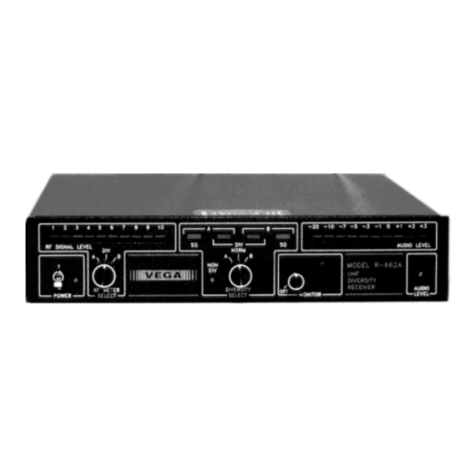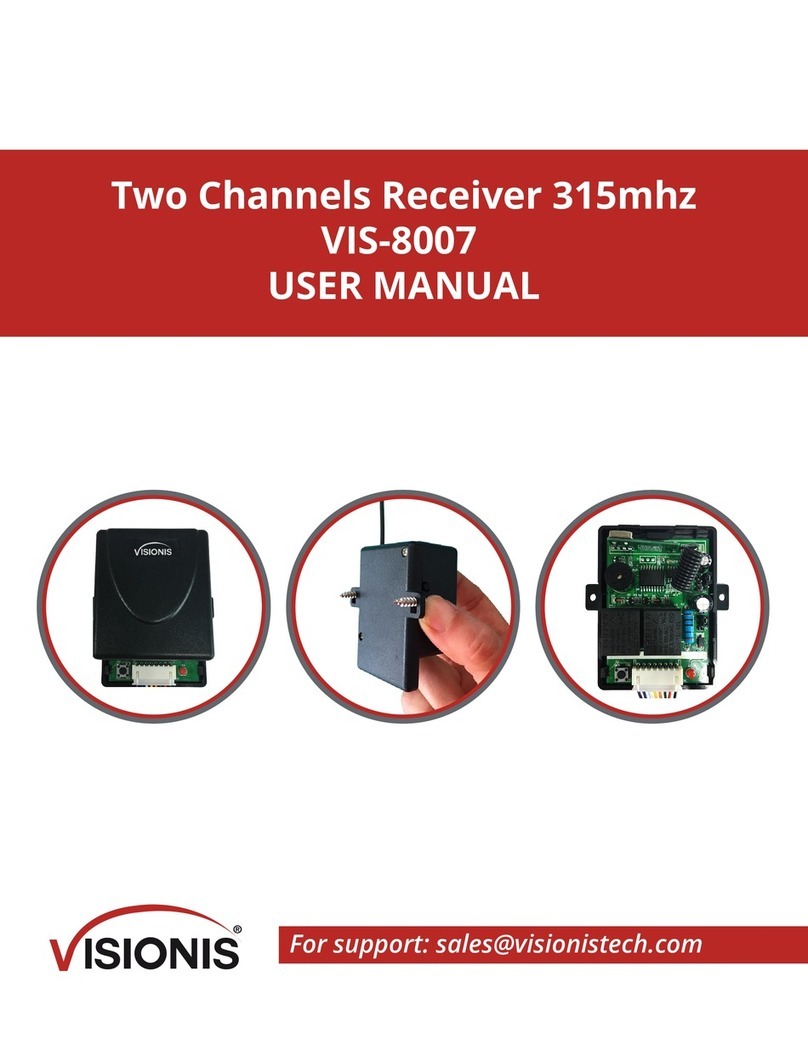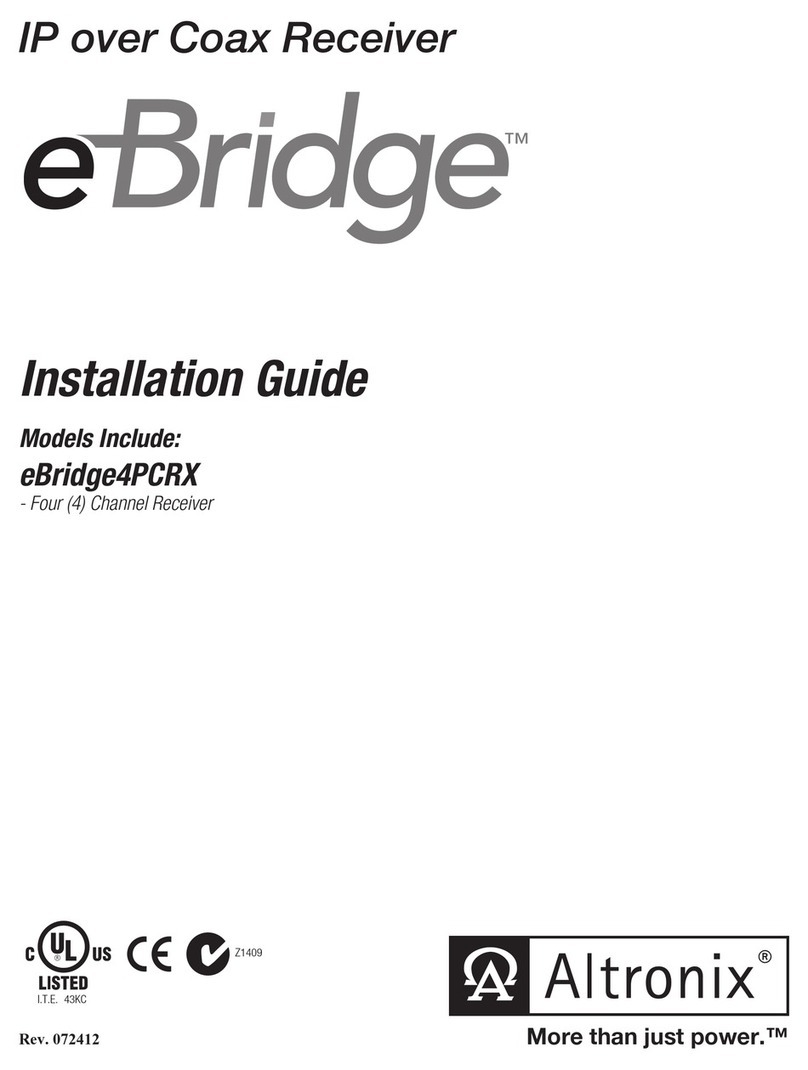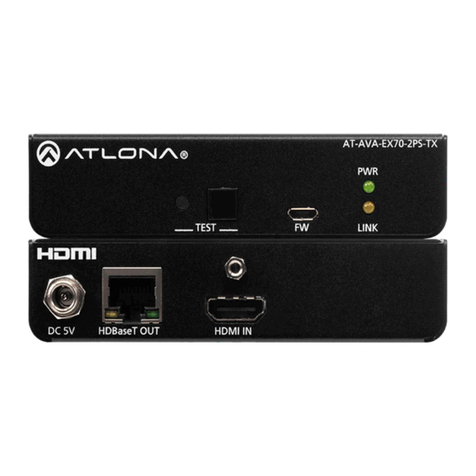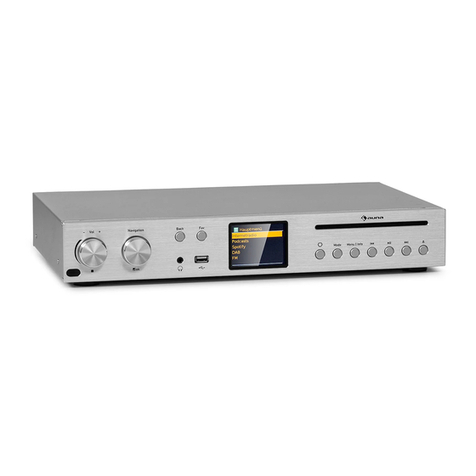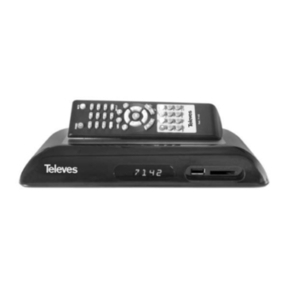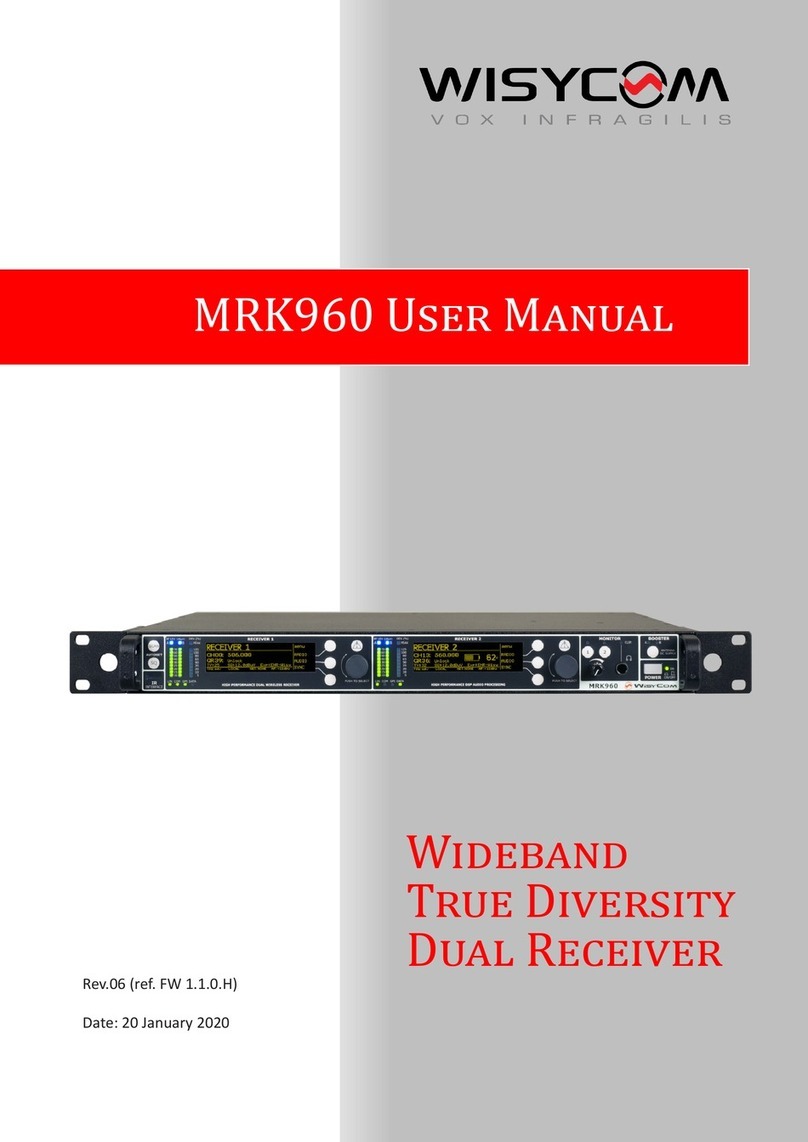Daystrom Heath CR-1 Quick setup guide

~3AI3::>3}1
'''lSA~::>
· · ·
J-noA
6u!sn
PUD
6u!ICfwass,v

MOLDED
MICA
TYPE
CAPACITORS
RMA
(S·DOT
OBSOLETE
CODE)
:
W.'kinll~
~~
T.l.,an,.
81
:J(Si9nifi,ant,F,gore
VDltDge
'=',.
Multipli.,
Mult,pli.,
t.
F,
••
Ilst
2nd
\
Signifie
..
1
F,.,.
1
•
Mullipli.,
~
WOrking
Vo
'age
lear
.
~
Tol.rOlllC'
Tolerance
WDrklng
V.ltage lank
RMA
4-DOT
(OBSOLETE)
~
WO'king
Va"""
~-IIIUltiPIl.r
2::
fSignifi,
..
t
Fig.,.
BUTTON
SIL
VEl
"ICA
CAPACITOR
cl
...
--
,.lerallt.
M.ltlpli.,
3rd
,dlgil
Multipli.,
RMA
t.-DOT
(OBSOLETE)
lst}
2nd
Si
..
ifi,.t
FI",
••
3rd
RMA
3-DOT
(OBSOLnEl
RATED
SOO
VI.V.D.C.
±
20%
TaL.
~rM.Jtipli.r
~fSignifiea.t
Fi
..
,.
JAN
..
"48
IMA
COD£
~
1.t{S"fi'
Whil. (IMA)
2nd
\.gn, [ani Flgu,e
Ilacll
(JAN)
,Multiplie'
Class Tolerance
CURRENT
STANDARD
CODE
MOLDED
PAPER
TYPE
CAPACITORS
Cour'.,y
of Centro/ab
lIIultipiior
ch
..
Mterisllr:
JAN.
CODE
CAPACITOR
.
ht
f
SlgaiS,.t
, I I
r;~
"goor.
lIn the design ofHeathkits. the
temperature
coefficient ofceramic
or mica capacitors
is
not generally acritical factor aud there-
'fore
Heathkit
manuals avoid reference to temperature coefli-
cicnt. specifications.
MqLDED
FLAT
CAPACITOR
ICommo"ial Cod.
Il""k
IJy
1I
...",ally
._pod
f.,
vol,.
The
tolerance rating of capacitors is determined by the color
code.
For
example: red =2%. green =
5%,
etc.
The
voltage
ratiug
of
capacit.ors is obtained
hy
mult.iplying
t.he
color value
by
100. For example: orange =3 X 100 or 300 volts. Blue
6 X 100 or 600
vol\.~
2.d
(Sill"ifo,ao'
lst \Voltage Figo,.
A 2 digit Yol'age rating indicates
IfMJr
...
900
V
~
Add
7
ze'DS
to
end
of
7digit
••
mbe,.
TUBULAR
CAPACITOR

·/
Antenna
TResilotor
---
Rcceptocle
~
-A./\tv-
Neon
Bulb
General
General
two-conductor
loop
@Resistor
JVyv-
Illuminating
(J
-±1~
Topped
lamp
Battery
~
%
Switch
Ground
Resistor
Variable
Single
pore
0"'0
fuse
d\P
Single
throw
Inductor
]
~f-
Switch
:;-..;"0
~O~
Potentiometer
double
pole
0,
Piezoelectric
General
single
throw
0"0
Cry,tol
Air
core
][Switch 0:'-0 0
Trontformer
Thermistor
~
Triple
pole
0:--0
01000
==
K
General
Double
thro.w
0"0
0
Adiustable
~
oV
~
Switch
dO~
"Jock
Powdered
Iron two
conductor
Multipoint
or
1,000,000 =M
"
Core
"
Rotary
00
Magnetic
Core
~
Jock
~I\~
Speaker
~
OHM=
Sl
Variable
Coupling
three
conductor
Iron
Core
]III[
Wires
~,.+
Rectifier
'-.-
MF
Transformer
co"neded
Microfarad
::::
Copodtor
Wire. ++
=(]
Mi"o
MM
Gener«:d -it-
Crossing
but
Microphone
Microfarad
=F
nof
connected
Capacifor
A,
Ammeter
-0
''";
..
,.
...
':~
Binding
pad
-0-
Electrolytic
+-1
E--
V.
Vohmeter
suppreuor
..
__
r.rminol.t'iPiod~
---
screen
G.
Ga!\lanarne'er
Grid
___
Capaciter
--*
MA.
Milliammeter
Wiring
between
..l...l.
..l...l.
Variable
vA.
Micreommetet,
etc.
cathode
like
letters
is
......
XY X
YX
dament
understood
-iY
(Ollr/elY
of
I.
R.
E.
....
_---------------------------------~--~~-~--------~------------~-------

HEATH
COMPANY
A
Subsidiary
of
Doystrom
Inc.
THE
WORLD'S
FINEST
ELECTROMIC
EQUIPMENT
IN
KIT
fORM
BENTON
HARBOR,
MICHIGAN
4/30/56
Copyright
1956
Heath
Compony
Benton
Horbor,
Michigon
1""o"'V.S,""

ASSEMBLY
AND
OPERATION
OF
THE
HEATHKIT
CRYSTAL
RECEIVER
MODEL CR-l
SPEC
IFIC
ATrONS
Tuning
Range:
540-1600
kilocycles
Controls:
Primary
Tuning
-
variable
capacitor
and
switch
selected
fixed
capacitors.
Secondary
Tuning
-
variable
capacitor.
Binding
Posts
for
Antenna,
Ground
and
Headset
Cabinet
Size:
.............•.................
6"
long
x
3"
wide
x 2
1/8"
deep
Headset:
Double,
4000
Q
DC
resistance
Net
Weight:
1
1/4
lbs.
Shipping
Weight:
3
lbs.

HEADSET
CRYSTAL DIODE
CRI
100
TRANSFORMER
II
~
I
ii~L2
DET
~C2
II
.
~~5
MMF
IIL·
~
:1
200
~
SI
C3
I
C4
SWITCH
,
365
3501
350
MMF MMF MMF
LI
ANTENNA
GND.
HEATHKIT
CRYSTAL
RECEIVER
SCHEMATIC
MODEL
CR-l

INSTRUMENT
DESCRIPTION
The
Heathkit
Crystal
Receiver
model
CR
-1
is
an
improved
version
of a
type
of
radio
that
enjoyed
popularity
around
the
early
1920'
s.
Such
a
receiver
contains
circuits
capable
of
tuning
or
select-
ing
the
desired
radio
signal
and
a
crystal
detector
to
extract
the
electrical
sound
energy
from
the
radio
signal.
Headphones
are
us~d
to
reproduce
the
program
material.
An
outdoor
antenna
and
a
ground
are
required
except
in
locations
near
the
radio
transmitter.
Modern
components
have
made
it
possible
to
design
a
more
efficient
and
compact
receiver
than
was
possible
when
radio
was
in
its
infancy.
The
temperamental
"cats-whisker"
and
galena
cry-
stal
have
been
replaced
by
a
germanium
diode
that
requires
no
adjustment
and
is
much
more
sensitive.
Powdered
iron
cores
in
the
coils
permit
a
great
reduction
in
size
and
lncrease
their
efficiency.
Crystal
receivers
possess
advantages
not
found
in
other
receivers.
No
power
iiS
r::quired
in
their
operation,
making
them
independent
of
power
lines
or
batteries.
They
are
small,
light
and
have
no
parts
to
wear
out.
The
crystal
receiver
is
capable
of
better
audio
quality
and
iJignal-
to-noise
ratio
than
most
broadcast
receivers
available
today,
making
it
practical
as
a
tuner
for
high
fidelity
sound
installations.
Its
simplicity
and
low
cost
make
it
ideal
for
the
beginner
in
radio
or
as
an
emergency
receiver
such
as
recommended
by
Civil
Defense
authorities.
The
Heathkit
Crystal
Receiver
is
housedin
an
attractive
black
bak'3lHe
cabinet
and
has
matching
black
knobs.
The
panel
is
charcoal
gray
and
all
controls
are
identified
by
white
lettering.
All
components
were
selected
for
optimum
performance
of
the
finished
receiver.
Construction
is
easily
accomplished
with
simple
hand
tools.
You
can
enjoy
reception
within
an
hour
after
open-
ing
your
kit.
Even
in
these
days
of
short
wave
and
teleVision,
there
is
a
certain
thrill
to
be
had
in
logging
stations
from
500
to
1000
miles
or
more
on a
receiver
built
by
yourself
and
powered
only
by
the
signal
from
the
antenna.
CIRCUIT
DESCRIPTION
The
design
of a
crystal
radio
receiver
involves
the
conflicting
factors
of
selectivity
and
sensiti-
vity.
Selectivity
is
the
ability
of
the
radio
to
separate
one
radio
station
from
another
when
they
operate
near
the
same
frequency.
Sensitivity
is
the
ability
of
the
radio
to
produce
usable
VOlume
from
a
weak
signal.
The
circuit
of
your
Heathkit
Crystal
Receiver
was
designed
to
prOVide
the
best
possible
combination
of
selectivity
and
sensitivity.
A
brief
theory
of
operation
of
the
var-
ious
components
follows
for
those
interested
in
learning
more
about
the
way
in
which
this
has
been
accomplished.
In
order
to
talk
about
any
science
or
field
of
learning,
it
is
necessary
to
use
the
language
of
that
science.
In
the
description
that
follows,
any
words
that
may
be
new
to
you
will
be
explained.
If
some
of
them
are
still
not
too
clear,
an
ordinary
dictionary
will
be
helpful.
Besides
learning
words
that
may
be
new
to
you, you
should
also
learn
the
meaning
and
use
of
the
symbols
used
in
drawing
a
"schematic
diagram"
of a
radio
circuit,
such
as
appears
on
Page
2.
These
symbols
are
sort
of
an
electronic
shorthand
used
to
represent
the
various
components
that
go
into
the
making
of a
radio
or
any
other
electronic
circuit.
By
using
the
proper
symbols
and
connecting
lines,
any
circuit,
simple
or
complicated,
can
be
written
so
that
anyone
familiar
with
the
system
will
have
no
difficulty
in
understanding
it.
The
inside
cover
of
this
manual
gives
examples
of
most
of
the
commonly
used
radio
symbols.
Several
of
them
are
used
in
the
schematic
diagram
of
your
CR-l
Crystal
Receiver
on
Page
2.
In
the
description
that
follows,
a
reference
number
is
assigned
to
each
of
the
components
as
it
is
described.
This
number
cor-responds
with
a
num-
ber
placed
next
to
the
symbol
for
that
component
on
the
diagram.
By
referring
to
the
diagram
as
you
read
the
text,
you
should
become
familiar
with
the
use
of
the
system
and
gain
a
better
understanding
of
the
relationship
of
the
various
components
of
your
receiver.
You
will
probably
find
many
statements
that
are
not
explained
in
much
detail.
This
is
because
there
is
not
enough
room
in
a
book
this
size
to
go
into
great
detail.
Many
volumes
have
been
written
to
cover
each
and
all
of
the
various
parts
of
the
circuit.
It
is
hoped
that
this
discussion
will
throw
a
little
light
on
an
interesting
subject
and
that
those
interested
in
learning
more
will
avail
themselves
of
the
many
books
that
may
be
found
in
the
public
library.
Page
3

Radio
signals
travel
from
the
transmitting
antenna
to
your
receiving
antenna
in
the
form
of
elec-
tromagnetic
waves.
These
waves
are
a
form
of
energy
similar
to
light,
although
we
cannot
see
them.
When
these
waves
pass
the
receiving
antenna,
they
cause
an
electrical
current
to
flow
in
it.
Because
of
the
nature
of
the
radio
waves,
the
current
that
flows
is
an
alternating
current
(AC)
or
one
that
continuously
reverses
its
direction
of flow
in
the
wire.
You
might
compare
it
to
the
baseball
in
a
game
of
"catch,
"
where
the
ball
travels
first
in
one
direction
and
then
the
other.
Two
complete
changes
of
direction
form
what
is
called
one
"cycle."
In
our
ball
game,
one
cycle
would
consist
of
your
throwing
the
ball
and
then
catching
it
one
time.
In
radio
or
elec-
tricity,
the
number
of
cycles
that
occur
in
one
second
is
called
the
frequency.
Ordinary
house
lighting
current
flows
back
and
forth
sixty
times
every
second,
therefore
it
is
called
60
cycle
AC.
The
frequency
of
the
radio
signals
used
in
the
standard
broadcast
band
may
vary
between
54CJ
kilocycles
and
1600
kilocycles.
Kilo
is
a
Greek
word
meaning
one
thousand,
therefore
the
frequencies
range
from
540,000
cycles
to
1,600,000
cycles~
much
higher
than
standard
house
lighting
current.
Because
signals
from
many
different
radio
stations
are
present
at
the
antenna
at
the
same
time,
it
becomes
necessary
to
select
or
tune
in
the
desired
signal
and
reject
the
others.
In
radio
this
may
be
accomplished
by
using
a
"resonant"
circuit.
TwO
such
circuits
are
used
in
the
CR-1
Crystal
Receiver.
The
first
one
consists
of
the
ANT.
tuning
capacitor
C1
and
coil
L1
connected
to
it.
In
order
to
keep
the
tuning
capacitor
at
a
reasonable
physical
size,
a
switch
S1
is
pro-
vided
to
connect
additional
fixed
mica
capacitors
C3
and
C4,
in
parallel
withit
to
extend
the
cap-
acity
if
required.
These
additional
capacitors
mayor
may
not
be
reqUired,
depending
on
the
antenna
in
use.
The
second
resonant
circuit
consists
of
the
DET.
tuning
capacitor
C2
and
coil
L2
connected
to
it.
More
will
be
said
about
the
coils
later.
A
combination
of a
coil
and
a
capacitor
has
the
abil-
ity
to
accept
an
alternating
current
of a
certain
frequency
in
preference
to
all
other
frequencies.
By
adjusting
the
electrical
size
of
either
the
coil
or
the
capacitor,
the
resonant
frequency
may
be
adjusted
or
tuned
to
any
desired
value.
Since
the
size
of
the
coils
in
the
CR-1
Crystal
Rec-
eiver
cannot
be
changed,
tuning
is
done
by
changing
the
electrical
size
of
both
the
ANT.
and
DET.
capacitors.
As
you
turn
the
knob,
notice
that
the
metal
plates
of
the
capacitor
move
into
or
out
of
"mesh.
"When
the
plates
are
fully
r:.leshed,
the
capacity
is
greatest
and
when
the
plates
are
out
of
mesh,
the
capacity
is
smallest.
In
this
way,
you
can
adjust
the
capacity
to
the
cor-
rect
value
to
tune
in
the
desired
station.
Because
the
principles
of
resonant
circuits
are
too
in-
volved
for
this
book,
let
us
compare
them
to
resonance
in
a
mechanical
form.
Imagine
a
weight
hung on a
spring
as
shown
in
Figure
lA.
If
you
pull
down on
the
weight
and
release
it,
it
will
con-
tinue
to
bounce
up
and
down
for
a
while
at
a
certain
rate
called
the
resonant
frequency.
If
you
were
to
change
either
the
weight
or
the
spring,
the
resonant
frequency
would
also
change.
Figure
lA
SUPPORT
WEIGHT
Figure
1B
TIGHTLY
STRETCHED
STRING
~
SUPPORTS.---------
Now
if
you
were
to
hang
two
identical
springs
and
weights
from
a
support
as
shown
in
Figure
lB,
you would
have
"coupled"
resonant
circuits.
When one of
the
weights
is
set
into
motion,
you
will
notice
that
the
other
one
will
also
bounce
up
and
down
at
the
same
rate
or
frequency.
We
can
say
that
they
are
in
resonance
with
each
other.
If
one of
the
springs
or
weights
were
changed,
very
little
or
no
motion
would
be
transferred
from
one
to
the
other.
Page
4

This
simple
experiment
can
be
tried
by
using
rubber
bands
for
the
springs
and
fishing
sinkers
for
the
weights.
By
experimenting
with
the
size
of
the
rubber
bands
and
weights,
you
will
find
many
combinations
that
will
resonate
with
each
other.
At
this
time
we
can
return
to
the
discussion
about
the
coils
and
see
what
they
do
in
the
radio.
First
of
all,
it
becomes
necessary
to
learn
a
little
more
about
an
electric
current.
One
very
important
fact
is
that
when
a
current
flows
in
a
wire
or
conductor,
a
magnetic
field
will
exist
around
that
wire
or
conductor.
The
strength
of
the
magnetic
field
depends
upon
the
amount
of
current
that
is
floWing.
This
principle
is
used
in
making
the
huge
electro-magnets
used
in
steel
yards
for
lifting
large
pieces
of
iron
and
steel.
Such
a
magnet
is
made
of
many
turns
of
wire
with
a
great
amount
of
current
flowing
in
them.
If
we
use
an
alternating
current,
the
magnetic
field
will
build
up
and
fall
back
as
the
current
changes
direction
in
the
wire.
This
fact
is
very
important
as
you
will
soon
learn.
Another
very
important
fact
is
this;
when
a
wire
is
made
to
move
through
a
magnetic
field,
a
current
will
flow
in
the
wire.
The
same
thing
will
happen
if
the
magnetic
field
is
made
to
move
past
the
wire.
Electric
generators
work
because
many
turns
of
wire
are
made
to
move
in
a
magnetic
field.
Water,
steam
or
gasoline
power
is
usually
used
to
turn
the
generator.
A
trans-
former
is
a
device
designed
to
workon
the
principle
of
a
moving
magnetic
field.
It
usually
con-
sists
of
two
or
more
coils
of
wire
placed
near
each
other
or
wound
on
a
common
iron
core.
An
alternating
current
flOWing
in
one
of
the
coils
will
cause
a
current
to
flow
in
the
other
coil
or
Goils.
A
common
example
of a
transformer
is
a
doorbell
transformer.
It
consists
of
two
coils
of
wire
wound
on
an
iron
core.
Sixty
cycle
house-lighting
current
flowing
in
one
of
the
coils
creates
a
moving
magnetic
field
that
passes
the
wires
in
the
other
coiL
A
current
is
made
to
flow
in
the
second
coil.
The
transformer
is
made
so
that
this
current
is
proper
for
operating
the
doorbell.
The
coils
in
your
Heathkit
Crystal
Receiver
also
form
a
transformer.
The
differ-
ence
between
it
and
a
doorbell
transformer
is
the
type
of
construction
necessary
to
make
it
oper-
ate
at
the
higher
frequencies
used
for
radio
broadcasting.
The
coils
are
wound
with
Litz
Wire,
which
consists
of
many
strands
of
extremely
fine
wire,
insulated
from
each
other
and
given
an
overall
insulation
of
nylon.
This
type
of
wire
has
lower
losses
than
solid
wire
at
the
broadcast
frequencies.
Cores
of
finely
powdered
iron
are
placed
within
the
coils.
Iron
such
as
used
in
the
doorbell
transformer
would
not
work
at
the
broadcast
frequencies.
By
now,
you
have
probably
started
to
see
the
purpose
of
the
transformer
in
your
radio.
The
electric
current
from
the
antenna
flows
through
one
of
the
coils.
The
ANT.
tuning
capacitor
tunes
or
resonates
the
circuit
to
the
desired
station.
Since
this
is
an
alternating
current,
the
moving
magnetic
field
passes
through
the
other
coil,
causing
current
to
flow
in
it.
This
coil
is
tuned
or
resonated
by
the
DET.
tuning
capacitor.
By
providing
two
tuned
or
resonant
circuits,
the
selectiVity
of
the
radio
has
been
improved
greatly.
It
would
be
possible
to
add
more
tuned
circuits
to
further
improve
selectivity,
however,
there
is
some
loss
involved
each
time
the
sig-
nal
passes
through
a
transformer,
making
further
circuits
undesirable.
Before
continuing
with
the
description
of
your
crystal
receiver,
it
will
be
helpful
to
learn
a
little
more
about
electricity.
Up
to
this
point,
we
have
talked
only
about
an
electric
current.
Another
very
important
thing
to
understand
is
the
term
"voltage"
or
simply
"volts."
Current
is
the
term
we
have
been
using
to
mean
the
flow
or
movement
of
electricity
in
a
wire.
Voltage
is
a
term
used
to
describe
a
difference
in
electrical
pressure
at
various
points
in
an
electrical
circuit
or
device.
A
battery
is
a
simple
device
that
produces
a
difference
in
electrical
pressure
at
its
ter-
minals
by
chemical
action
of
the
material
used
in
making
it.
When
a
wire
or
bulb
Or
buzzer
is
connected
to
its
terminals,
a
current
will
flow
through
it
because
of
the
difference
in
electrical
pressure
or
the
voltage
that
exists
between
its
terminals.
This
action
will
continue
until
the
chemicals
are
exhausted.
We
might
compare
the
battery
to
a
pump
forcing
water
through
pipes.
The
water
will
flow
as
long
as
there
is
a
difference
in
pressure
between
different
points
in
the
system,
flowing
from
the
point
of
high
pressure
to
the
point
of
lower
pressure.
Page
5

Let
us
return
to
the
battery
and
connect
three
bulbs
in
"series"
across
its
terminals.
Figure
2
shows
what
is
meant
by
a
series
connection.
The
current
flows
through
each
bulb
in
succession,
therefore,
the
same
amount
of
current
must
flow
in
each.
Let
us
assume
that
the
three
bulbs
are
identical
and
that
the
battery
voltage
is
three
volts.
If
you
were
to
place
the
leads
of a
voltmeter
across
each
of
the
bulbs,
you
would
find
that
there
is
one
volt
of
pressure
across
each.
The
total
voltage
across
the
three
bulbs
would
be
the
same
as
the
battery
voltage.
Since
the
bulb
Figure
2
itself
is
not
capable
of
producing
electrical
pressure
or
voltage
such
as
the
battery,
there
must
be
another
reason
for
this
observation.
The
voltage
appearing
across
the
bulb
is
caused
by
the
current
flowing
through
the
bulb.
The
voltage
caused
by
current
flowing
in
the
coil
of
the
transformer
is
used
to
operate
the
headphones
of
your
crystal
receiver.
At
this
time
it
becomes
necessary
to
examine
the
nature
of
the
voltage
and
the
necessity
for
the
crystal
detector.
Figure
3A
is
a
graph
that
re-
presents
the
voltage
appearing
across
the
coil.
It
is
assumed
that
the
radio
is
tuned
to
a
station
at
1000
kilocycles
and
at
the
moment
there
is
no
speech,
music
or
any
program
material.
This
signal
is
what
is
called
the
"carrier."
Even
if
it
were
possible
to
convert
this
voltage
into
sound
in
the
headphones,
it
would
be
impossible
to
hear
anything
because
our
ear
cannot
hear
sounds
above
fifteen
to
twenty
thousand
vibrations
per
sec-
ond. You
can
see
that
it
is
necessary
to
do
something
to
the
carrier
signal
before
it
will
be
possible
to
hear
any
sounds.
This
"something"
is
called
modulation.
AVERAGE
VALUE
OF CARRIER PLUS
MODULATION
Figure
3B
I
SECOND
-----?
CARRIER PLUS
MODULATION
BY
1,000
CYCLE
TONE
'II
I'
"-I,O~O
C:F
THESE
PEAKS
OCCUR
DURING ONE
SECOND
I-
Figure
3B
is
a
graph
that
represents
the
carrier
voltage
with
modulation
added.
It
is
assumed
that
a
musical
note
of 1000
cycles
is
modulating
the
carrier.
1000
cycles
is
approximately
the
frequency
of
the
note
two
octaves
above
middle
Con
the
piano.
Notice
that
the
height
or
ampli-
tude
of
the
carrier
voltage
is
changing
1000
times
each
second.
The
voltage
now
has
a
complicated
form
with
fast
variations
of
1,000,000
cycles
per
second
and
slow
variations
of 1000
cycles
per
second.
If
the
variations
of 1000
cycles
are
con-
verted
to
sound
in
the
headphones,
we
will
hear
the
musical
note.
As
yet
it
is
not
possible
to
use
this
voltage
to
operate
the
headphones,
for
this
reason;
notice
that
the
changes
of
voltage
are
equal
above
and
below
the
reference
line.
Because
of
this,
the
average
value
of
the
voltage
re-
presented
by
the
graph
is
O.
In
order
to
extract
the
electrical
sound
energy
or
modulation
from
the
carrier,
the
crystal
is
used.
Because
of
its
function
in
the
radio,
it
is
called
a
detector
or
demodulator.
The
crystal
detector
CR1
consists
of a
small
block
of
refined
germanium
with
a
very
fine
wire
resting
on
its
surface.
This
wire
is
welded
in
position
so
that
it
cannot
be
disturbed.
In
the
early
days
of
radio,
the
crystal
was
made
of a
mineral
called
galena.
The
Wire,
called
a
"cats-
whisker"
had
to
be
carefully
placed
on
the
surface
of
the
crystal
and
very
often
it
would
be
jarred
out
of
position.
The
modern
germanium
crystal
is
much
more
sensitive
and
is
completely
pro~
tee
ted
by
its
molded
case.
The
crystal
allows
current
to
flow
through
it
in
one
direction
only,
like
traffic
on
a
one
way
street.
A
vacuum
tube
also
has
this
same
property.
The
process
of
passing
current
in
one
direction
only
is
called
"rectification.
"
Page
6

When
the
voltage
appearing
across
the
coil
is
applied
to
the
crystal,
only
the
voltage
or
pressure
operating
in
the
direction
that
the
crystal
passes
current
will
get
through.
Figure
3C
is
a
graph
that
represents
the
signal
voltage
after
it
passes
through
the
crystal
detector.
It
consists
of
many
separate
spurts,
changing
in
value
from
a
minimum
to
a
maximum
1000
times
a
second.
CARRIER PLUS
MODULATION
AFTER
PASSING
THROUGH
DETECTOR
AVERAGE
..-
VALUE VOLTAGE
APPLIED
TO HEAD
PHON~
Figure
3C
Figure
3D
Figure
4
DIAPHRAGM
INORMAL POSITION
:--OF
DIAPHRAGH
I
WITHOUT
PERMANENT
MAGNET
PERMANENT~~--~~~
MAGNET
Notice
now
that
the
average
voltage
changes
or
alternates
1000
times
a
second.
The
graph
in
Figure
3D
represents
this
voltage.
By
the
process
of
detection,
we
have
extracted
the
audio
voltage
from
the
carrier.
Audio
is
the
word
used
to
refer
to
the
range
of
frequencies
that
can
be
heard
by
the
ear,
approximately
20
cycles
to
20,000
cycles.
Remember,
the
ear
cannot
hear
a
voltage,
only
vibrations
in
the
air
that
we
call
sound.
The
headphones
are
constructed
to
convert
this
voltage
into
sound.
Each
unit
contains
a
small
permanent
magnet
wound
with
many
turns
of
fine
WIRE
wire.
A
thin
disc
or
diaphragm
of
iron
is
placed
close
to
the
end
of
the
magnet
so
that
it
is
pulled
toward
it
very
slightly.
Figure
4
is
a
cross-
section
view
of a
typical
headphone.
The
dotted
line
shows
the
position
of
the
diaphragm
if
there
were
no
magnet.
The
coil
of
wire
wound
around
the
magnet
forms
an
electro-magnet
such
as
we
have
already
learned
about.
When
the
voltage
from
the
crystal
detector
is
applied
to
the
headphones,
the
strength
of
the
electro-magnet
will
change
with
the
changes
in
the
voltage.
These
changes
in
the
strength
of
the
magnet
will
alter-
nately
aid
or
oppose
the
permanent
magnet
and
cause
the
diaphragm
to
move
or
vibrate
at
a
rate
equal
to
the
frequency
of
the
musical
note,
or
1000
cycles.
The
vibrations
of
the
diaphragm
produce
the
sound
which
we
hear.
Although
modulation
by a
single
tone
was
used
to
illustrate
the
principles
involved,
the
same
effect
occurs
when
modulation
consists
of
speech,
music
or
even
picture
information
in
a
television
broadcast.
PREL~INARY
NOTES
UNPACK
THE
KIT
CAREFULLY
AND
CHECK
EACH
PART
AGAINST THE
PARTS
LIST. In
so
doing, you
will
become
acquainted
with
the
parts.
If
a
shortage
is
found,
attach
the
inspec-
tion
slip
to
your
claim
and
notify
us
promptly.
Screws,
nuts
and
washers
are
counted
mechan-
ically
and
if afew
are
missing,
please
secure
them
locally
if
at
all
possible.
Use
the
charts
on
the
inside
covers
of
the
manual
to
identify
the
parts.
Read
the
manual
completely
through
before
starting
actual
construction.
In
this
way,
you
will
become
familiar
with
the
general
procedure
used.
Study
the
pictorials
and
diagrams
to
get
ac-
quainted
with
the
circuit
layout
and
location
of
parts.
When
actually
assembling
and
wiring,
read
each
step
all
the
way
through
before
you
do
it
so
that
no
suggestions
will
be
missed.
In
constructing
your
kit,
you
will
need
a
soldering
iron,
60-100
watt,
1/4"
tip
or
the
equivalent
in
a
soldering
gun;
rosin
core
radio
solder;
two
screwdrivers,
1/8"
and
1/4"
blades;
pliers,
preferably
long
nosed;
diagonal
wire
cutters
or
a
suitable
substitute.
A
small
adjustable
wrench
is
convenient
but
not
necessary.
Page
7

PROPER
SOLDERING
PROCEDURE
Only
a
small
percentage
of
Heathkit
purchasers
find
it
necessary
to
return
an
instrument
for
fac-
tory
service.
Of
these,
by
far
the
largest
proportion
function
improperly
due
to
poor
or
improper
soldering.
Correct
soldering
technique
is
extremely
important.
Good
solder
joints
are
essential
if
the
per-
formance
engineered
into
the
kit
is
to
be
fully
realized.
If
you
are
a
beginner
with
no
experience
in
soldering,
a
half-hour's
practice
with
odd
lengths
of
wire
and
a
tube
socket
will
be
a
worth-
while
investment.
High
quality
solder
of
the
proper
grade
is
most
important.
There
are
several
different
brands
of
solder
on
the
market,
each
clearly
marked
"Rosin
Core
Radio
Solder."
Such
solders
consist
of
an
alloy
of
tin
and
lead,
usually
in
the
proportion
of 50: 50.
Minor
variations
exist
in
the
mix-
ture
such
as
40:60,
45:55,
etc.
with
the
first
figure
indicating
the
tin
content.
Radio
solders
are
formed
with
one
or
more
tubular
holes
through
the
center.
These
holes
are
filled
with
a
rosin
compound
which
acts
as
a
flux
or
cleaning
agent
during
the
soldering
operation.
NO
SEPARATE
FLUX
OR
PASTE
OF
ANY KIND SHOULD
BE
USED. We
specifically
caution
against
the
use
of
so-called
"non-corrosive"
pastes.
Such
compounds,
although
not
corrosive
at
room
temperatures,
will
form
residues
when
heated.
The
residue
is
deposited
on
surround-
ing
surfaces
and
attracts
moisture.
The
resulting
compound
is
not
only
corrosive
but
actually
destroys
the
insulation
value
of
non-conductors.
Dust
and
dirt
will
tend
to
accumulate
On
these
"bridges"
and
eventually
will
create
erratic
or
degraded
performance
of
the
instrument.
NOTE:
ALL
GUARANTEES
ARE
VOIDED AND WE
WILL
NOT
REPAIR
OR
SERVICE
INSTRUMENTS
IN
WHICH ACID
CORE
SOLDER OR
PASTE
FLUXES
HAVE
BEEN
USED. WHEN
IN
DOUBT
ABOUT
SOLDER,
IT
IS RECOMME.t-.'DED
THAT
ANEW
ROLL
PLAINLY
MARKED
"ROSIN
CORE
RADIO
SOLDER"
BE
PURCHASED.
If
terminals
are
bright
and
clean
and
wires
free
of
wax,
frayed
insulation
and
other
foreign
sub-
stances,
no
difficulty
will
be
experienced
in
soldering.
Crimp
or
otherwise
secure
the
wire
(or
wires)
to
the
terminal,
so
a
good
joint
is
made
without
relying
on
solder
for
physical
strength.
To
make
a
good
solder
joint,
the
clean
tip
of
the
soldering
iron
should
be
placed
against
the
joint
to
be
soldered
so
that
the
terminal
is
heated
sufficiently
to
melt
solder.
The
solder
is
then
placed
against
both
the
terminal
and
the
tip
of
the
iron
and
will
immediately
flow
out
over
the
joint.
Refer
to
the
sketch
below.
Use
only
enough
solder
to
cover
wires
at
the
junction;
it
is
not
necessary
to
fill
the
entire
hole
in
the
terminal
with
solder.
Excess
solder
may
flow
into
tube
socket
contacts,
ruining
the
socket,
or
it
may
creep
into
switch
contacts
and
destroy
their
spring
action.
Position
the
work
so
that
gravity
tends
to
keep
the
solder
where
you
want
it.
Page
8

A
poor
solder
joint
will
usually
be
indicated
by
its
appearance.
The
solder
will
stand
up
in
a
blob
on
top
of the
connection,
with
no
evidence
of flowing
out
caused
by
actual
"wetting"
of
the
contact.
A
crystalline
or
grainy
texture
on
the
solder
surface,
caused
by
movement
of
the
joint
before
it
solidified
is
another
evidence
of a
"cold"
connection.
In
either
event,
reheat
the
joint
until
the
solder
flows
smoothly
over
the
en-
tire
junction,
cooling
to
a
smooth,
bright
appearance.
Photo-
graphs
in
the
adjoining
picture
clearly
indicate
these
two
characteristics.
Agood,
clean,
well-tinned
soldering
iron
is
also
important
to
obtain
consistently
perfect
con-
nections.
For
most
wiring,
a60
or
100
watt
iron,
or
the
equivalent
in
a
soldering
gun,
is
very
satisfactory.
Smaller
irons
generally
will
not
heat
the
connections
enough
to
flow
the
solder
smoothly
over
the
joint
and
are
recommended
only
for
light
work,
such
as
on
etched
circuit
boards,
etc.
Keep
the
iron
tip
clean
and
bright.
A
pad
of
steel
wool
may
be
used
to
wipe
the
tip
occasionally
during
use.
Take
these
precautions
and
use
reasonable
care
during
assembly
of
the
kit.
This
will
insure
the
wonderful
satisfaction
of
having
the
instrument
operate
perfectly
the
first
time
it
is
turned
on.
STEP-BY-STEP
ASSEMBLY INSTRUCTIONS
Check
off
each
step
in
the
space
provided
as
it
is
completed
M
(v(
Observe
Pictorial
1
at
the
top
of
Page
10.
Mount
the
ANT.
binding
post
using
a
fiber
shoul-
der
washer,
fiber
flat
washer,
solder
lug
and
6-32
nut.
Make
sure
that
the
shoulder
washer
is
centered
in
the
hole
and
tighten
securely.
See
Figure
5.
(J
In a
like
manner,
mount
aPHONE
binding
post
in
the
hole
nearest
the
corner
of
the
panel.
solder
,
NUT
rr::;:o
#"
~SOLDER
LUG
I
,
I
SHOULDER
: \
PANEL
'
WASHER
..J1I{IIJm
I
LETTERED
SIDE
I
I
+
:~~~'"~"
Figure
6
FIBER
BINDING
POST BASE
FIBER
SHOULDER
WASHER
I
NUT9A,
¥OLDER
LUG
FLAT
FIBER
WASHER-r-
Figure
5
/
(VJ
Mount
the
GND.
and
remaining
PHONE binding
post,
using
a
fiber
shoulder
washer,
lug
and
6-32
nut.
Tighten
securely.
See
Figure
6.
Thread
a
3/8"
nut
about
half
wayan
the
ANT.
switch
and
then
mount
it,
using
a
3/8"
lock-
washer,
flat
washer
and
nut. See
Figure
7.
(/Mount
the
two
tuning
capacitors,
using
6-32
x
3/16"
screws.
Be
careful
not
to
bend
the
pl.ates of the
capacitors.
('.
Solder
a
short
length
of
wire
between
ANT.
capaCitor
terminal
1
and
ANT.
switch
tei:
minall.
ANT.
SWITCH
CONTROL.
-
-@--@--
CONTROL
LOCI(WASHER
Figure
7
Page
9

PICTORIAL 1
( )
Solder
a
molded
350
Ill_if
mica
capacitor
between
the
GND.
binding
post
solder
lug
and
ANT.
switch
terminal
2.
Place
the
capacitor
flat
against
the
panel.
Cut
off
the
excess
leads.
( )
Solder
the
other
mica
capacitor
between
ANT.
switch
terminal
3
and
the
nearest
solder
lug.
Do
not
cut
off
the
lead
protruding
through
the
solder
lug.
NOTE:
The
coils
(transformer)
are
held
in
position
by
soldering
to
the
lugs
on
the
two
tuning
capacitors.
Solder
as
quickly
as
possible
to
avoid
charring
the
fiber
coil
form.
Handle
care-
fully
to
avoid
damage
to
the
fine
wire.
( ) One
end
of
the
transformer
has
three
lugs.
This
end
must
face
the
DET.
tuning
capacitor.
Turn
the
transformer
so
that
the
lug
with
the
colored
dot
points
away
from
the
panel.
( )
If
necessary,
bend
the
lugs
On
the
tuning
capacitor
so
that
the
lugs
on
the
transformer
can
be
soldered
to
them.
Refer
to
Pictorial
1
and
solder
the
transformer
to
the
lugs
on
the
tuning
capacitor.
Cut
the
lead
of
the
mica
capacitor
to
the
proper
length
and
solder
it
to
the
nearest
lug
on
the
transformer.
(t,.~)'
Solder
a
short
length
of
wire
between
the
ANT.
binding
post
solder
lug
and
the
nearest
lug
on
the
transformer.
Do
not
allow
this
wire
to
touch
anything
else.
NOTE:
The
crystal
diode
can
be
damaged
by
too
much
heat
while
soldering.
To
avoid
this,
grip
the
lead
of
the
diode
with
pliers
between
the
body
of
the
diode
and
the
point
of
soldering.
The
pliers
will
absorb
the
heat
and
prevent
damage.
(i
",)
Solder
the
diode
between
the
remaining
PHONE
binding
post
solder
lug
and
the
colored
lug
on
the
transformer.
The
end
of
the
diode
with
the
dot,
band,
or
bands
nearest
it
should
go
to
the
PHONE
terminal.
Page
10

( )
Check
all
connections
to
make
sure
they
are
properly
soldered.
Remove
any
loose
pieces
of
wire
or
solder
that
may
have
dropped
into
the
assembly.
Mount
the
assembly
in
the
case,
using
6-32
x
2"
screws
through
the
corner
holes.
Rotate
the
ANT.
tuning
capacitor
shaft
to
the
right
and
place
a
tuning
knob on
it
so
that
the
line
points
to
O.
Tighten
the
set
screw.
( )
Rotate
the
DET.
tuning
capacitor
shaft
to
the
left
and
place
a
tuning
knob
on
it
so
that
the
line
points
to
100.
Tighten
the
set
screw.
( )
Rotate
the
shaft
of
the
ANT.
switch
to
the
left.
Use
pliers
if
necessary.
Place
the
small
pointer
knob on
the
shaft
so
that
it
points
to
O.
Tighten
the
set
screw.
Screw
the
bi
nding
post
caps
on
the
four
binding
posts.
Attach
the
tips
of
the
headphones
to
the
PHONES
binding
posts.
The
tip
with
a
colored
thread
should
go
to
the
post
nearest
the
corner.
Attach
an
antenna
and
ground
as
described
in
the
following
section.
USING YOUR HEATHKIT
CRYSTAL
RECEIVER
INSULATORS
~
i
PICTORIAL
2
SOLDER
CONNECTION
Most
locations
require
agood
antenna
and
ground
installation
for
best
results.
A
suitable
ant-
enna
can
be
made
of 50
feet
or
more
of
wire
supported
as
high
and
away
from
surrounding
ob-
jects
as
possible.
An
insulator
should
be
used
at
each
end
of
the
antenna
where
it
is
attached
to
the
support.
An
insulated
lead-in
wire
of
sufficient
length
should
be
scraped
clean
at
one
end
and
soldered
to
the
antenna.
The
other
end
should
be
scraped
clean
and
attached
to
the
ANT.
bind-
ing
post
on
the
crystal
receiver.
A
ground
may
be
obtained
by
using
a
cold
water
pipe,
a
radiator,
or
a
metal
stake
6
to
8
feet
long
driven
into
moist
ground.
Scrape
or
sandpaper
the
pipe
so
that
it
is
shiny
and
attach
an
insulated
wire
to
it,
first
scraping
the
wire
clean.
Wrap
or
twist
the
wire
securely
around
the
pipe
or
use
a
ground
clamp
available
at
hardware,
radio
or
electrical
stores.
Scrape
the
other
end
of
the
ground
wire
clean
and
attach
it
to
the
GND.
binding
post
on
the
receiver.
Connect
the
tips
of
the
headset
wires
to
the
two
binding
posts
marked
PHONES.
Pictorial
2
illustrates
a
typical
installation
suitable
for
your
receiver.
Page
11

A
little
practice
will
be
reqUired
to
enable
you
to
tune
your
crystal
receiver
for
best
results.
Since
there
are
two
tuned
circuits,
both
must
be
properly
adjusted
in
order
to
receive
radio
broadcasts.
The
DET.
tuning
capacitor
will
tune
from
approximately
1600
kilocycles
at
0
to
540
kilocyclps
at
100.
Because
the
antenna
that
is
used
with
your
CR-1
Crystal
Receiver
will
have
an
effect
on
the
tuning
of
the
ANT.
tuning
capacitor,
the
calibration
that
applies
to
the
DET.
tuning
will
not
always
apply
to
the
ANT.
tuning.
As
mentioned
in
the
theory
of
operation,
a
switch
has
been
included
to
connect
additional
capacitors
into
the
ANT.
tuning
circuit
if
necess-
ary.
Notice
that
the
switch
positions
have
been
marked
0, 100
and
200.
The
reading'
of
the
ant-
enna
tuning
knob
should
be
added
to
the
number
of
the
switch
position
in
use
for
the
correct
cal-
ibration
figure.
Generally,
if
along
antenna
is
used,
all
ANT.
tuning
can
be
accomplished
with
the
switch
in
the
a
position.
In
this
case,
the
setting
of
the
ANT.
tuning
knob
would
correspond
closely
to
that
of
the
DET.
tuning
knob.
When
shorter
antennas
are
used,
it
will
be
necessary
to
advance
the
switch
to
the
100
position
and
possibly
alsoto
the
200
position,
while
tuning
from
1600
kilocycles
toward
540
kilocycles.
Note
that
the
tuning
of
the
ANT.
circuit
will
be
approximately
the
same
with
the
switch
at
a
and
the
knob
at
100
as
with
the
switch
at
100
and
the
knob
at
0,
since
the
two
figures
must
be
added
to
obtain
the
proper
calibration
figure.
The
same
rule
applies
when
the
switch
is
in
the
200
position.
It
can
be
seen
that
the
tuning
of
the
ANT.
circuit
can
vary
from
approximately
0
at
1,600
kilocycles
to
a
maximum
of 300
at
540
kilocycles.
A
few
minutes
prac-
tice
will
soon
familiarize
you
with
the
proper
technique
for
your
particular
antenna.
A
"log"
is
included
on
Page
15
to
enable
you
to
record
the
dial
settings,
frequency
and
call
letters
of
the
various
stations
that
you
receive.
Reception
of
distant
(DX)
stations
will
be
best
at
night
time.
It
is
not
uncommon
to
receive
sta-
tions
from
1,000
miles
or
more
when
a
good
antenna
is
used.
Keep
in
mind
that
the
only
power
available
to
operate
your
CR-l
Crystal
Receiver
comes
from
the
signal
received
by
the
antenna.
For
this
reason,
the
headphone
volume
depends
directly
on
the
strength
of
the
received
signal.
Only
in
locations
very
close
to
the
broadcast
station
can
makeshift
antennas
such
as
window
screens
or
bedsprings
be
used.
A
good
ground
connection
will
probably
be
required
even
in
such
locations.
For
emergency
use,
a
wire
can
be
thrown
over
a
tree
branch
for
an
antenna
and
a
short
metal
stake
pushed
into
the
ground
for
a
ground
connec-
tion.
Television
lead-in
wires
or
wire
fences
may
also
be
used
for
antennas
prOViding
they
are
not
"grounded"
through
metal
masts
or
fence
posts.
Since
there
are
no
parts
to
wear
out
or
any
power
requirements
needed,
your
CR-1
Crystal
Rec-
eiver
is
ready
to
operate
at
any
time.
Simply
put
down
the
headphones
when
you
are
through
listening.
With
proper
care
in
construction
and
use,
your
CR-l
Crystal
Receiver
will
last
al-
most
indefinitely.
Give
it
reasonable
care
and
it
will
prOVide
you
with
enjoyment
for
years
to
come.
IN CASE
OF
DIFFICULTY
1.
Recheck
the
wlrlllg.
Most
cases
of
difficulty
result
from
poor
or
improper
connections.
Having
a
friend
check
the
wiring
will
often
reveal
a
mistake
consistently
overlooked.
2.
Be
sure
that
a
sufficiently
strong
station
is
operating
at
the
time
of
test.
3.
Be
sure
that
the
antenna
and
ground
system
is
properly
installed
and
that
the
antenna
is
not
grounded
at
any
point.
4.
If
possible,
secure
the
help
of a
friendly
"ham"
or
radio
service
man.
REPLACEMENTS
Material
supplied
with
Heathkits
has
been
carefully
selected
to
meet
design
requirements
and
ordinarily
will
fulfill
its
function
without
difficulty.
Occasionally
improper
instrument
opera-
tion
can
be
traced
to
a
faulty
tube
or
component.
Should
inspection
reveal
the
necessity
for
re-
placement,
write
to
the
Heath
Company
and
supply
all
of
the
following
information:
Page
12

A.
Thoroughly
identify
the
part
in
question
by
using
the
part
number
and
description
found
in
thG
manual
parts
list.
B.
Identify
the
type
and
model
number
of
kit
in
which
it
is
used.
C.
Mention
the
order
number
and
date
of
purchase.
D.
Describe
the
nature
of
defect
or
reason
for
requesting
replacement.
The
Heath
Company
will
promptly
supply
the
necessary
replacement.
Please
do
not
return
the
original
component
until
specifically
requested
to
do
so.
Do
not
dismantle
the
component
in
question
as
this
will
void
the
guarantee.
If
tubes
are
to
be
returned,
pack
them
carefully
to
prevent
breakage
in
shipment
as
broken
tubes
are
not
eligible
for
replacement.
This
replace-
ment
policy
does
not
cover
the
free
replacement
of
parts
that
may
have
been
broken
or
damaged
through
carelessness
on
the
part
of
the
kit
builder.
SERVICE
In
event
continued
operational
difficulties
of
the
completed
instrument
are
experienced,
the
fa-
cilities
of
the
Heath
Company
Service
Department
are
at
your
disposal.
Your
instrument
may
be
returned
for
inspection
and
repair
for
a
service
charge
of
$3.00
plus
the
cost
of
any
additional
material
that
may
be
required.
THIS
SERVICE
POLICY
APPLIES
ONLY
TO
COMPLETED
INSTRUMENTS
CONSTRUCTED
IN ACCORDANCE WITH
THE
INSTRUCTIONS
AS
STATED
IN THE MANUAL.
Instruments
that
are
not
entirely
completed
or
instruments
that
are
modified
in
design
will
not
be
accepted
for
repair.
Instruments
showing
evidence
of
acid
core
solder
or
paste
fluxes
will
be
returned
not
repaired.
The
Heath
Company
is
willing
to
offer
its
full
cooperation
to
assist
you
in
obtaining
the
specified
performance
level
in
your
instrument.
Factory
repair
service
is
available
for
a
period
of
one
year
from
the
date
of
purchase
or
you
may
contact
the
Engineering
Consultation
Department
by
mail.
For
information
regarding
possible
modification
of
existing
kits,
it
is
suggested
that
you
refer
to
anyone
or
more
of
the
many
publications
that
are
available
on
all
phases
of
electronics.
They
can
be
obtained
at
or
through
your
local
library-,
as
well
as
at
any
electronic
outlet
store.
Although
the
Heath
Company
sincerely
welcomes
all
comments
and
suggestions,
it
would
be
im-
possible
to
design,
test,
evaluate
and
assume
responsibility
for
proposed
circuit
changes
for
specific
purposes.
Therefore,
such
modifications
must
be
made
at
the
discretion
of
the
kit
buil-
der
according
to
information
which
will
be
much
more
readily
available
from
some
local
source.
SHIPPING
INSTRUCTIONS
Before
returning
a
unit
for
service,
be
sure
that
all
parts
are
securely
mounted.
Attach
a
tag
to
the
instrument
giving
name,
address
and
trouble
experienced.
Pack
in
a
rugged
container,
preferably
wood,
using
at
least
three
inches
of
shredded
newspaper
or
excelsior
on
all
sides.
DO
NOT
SHIP
IN
THE
ORIGINAL
KIT
CARTON
AS
THIS
CARTON
IS NOT
CONSIDERED
ADEQUATE FOR
SAFE
SHIPMENT
OF
THE
COMPLETED
INSTRUMENT.
Ship
by
prepaid
express
if
possible.
Return
shipment
will
be
made
by
express
collect.
Note
that
a
carrier
can-
not
be
held
liable
for
damage
in
transit
if
packing,
in
HIS OPINION,
is
insufficient.
SPECIFICATIONS
All
prices
are
subject
to
change
without
notice.
The
Heath
Company
reserves
the
right
to
dis-
continue
instruments
and
to
change
specification
at
any
time
without
incurring
any
obligation
to
incorporate
new
features
in
instruments
preViously
sold.
WARRANTY
The
Heath
Company
limits
its
warranty
of
parts
supplied
with
any
kit
to
a
period
of
three
(3)
months
from
the
date
of
purchase.
Replacement
will
be
made
only
when
said
part
is
returned
postpaid,
with
prior
permission
and
in
the
judgment
of
the
Heath
Company
was
defective
at
the
time
of
sale.
This
warranty
does
not
extend
to
any
Heathkits
which
have
been
subjected
to
mis-
use,
neglect,
accident
and
improper
installation
or
applications.
Material
supplied
with
a
kit
shall
not
be
considered
as
defective,
even
though
not
in
exact
accordance
with
specifications,
if
it
SUbstantially
fulfills
performance
reqUirements.
This
warranty
is
not
transferable
and
ap-
plies
only
to
the
original
purchaser.
This
warranty
is
in
lieu
of
all
other
warranties
and
the
Heath
Company
neither
assumes
nor
authorizes
any
other
person
to
assume
for
them
any
other
liability
in
connection
with
the
sale
of
Heathkits.
Page
13

The
assembler
is
urged
to
follow
the
instructions
exactly
as
provided.
The
Heath
Company
as-
sumes
no
responsibility
or
liability
for
any
damages
or
injuries
sustained
in
the
assembly
of
the
device
or
in
the
operation
of
the
completed
instrument.
HEATH
COMPANY
Benton
Harbor,
Michigan
PART
PARTS
DESCRIPTION
No.
Per
Kit
6-32
SOLDER
LUG
ANTENNA
SWITCH
MICA
CAPACITOR
VARIABLE
CAPACITOR
350
Ililf
mica
capacitor
365
Ililf
variable
capacitor
Coil,
ANT.
DET.
Crystal
diode
SWitch,
ANT.
Binding
post
cap
Panel
6-32
x
3/16"
screw
6-32
x
2"
screw
6-32
nut
3/8-32
control
nut
#6
fiber
washer
#6
fiber
shoulder
washer
3/8
control
flat
washer
3/8
control
lockwasher
#6
solder
lug
length
Bare
wire
Headset,
dual
4000
n
Case
Binding
post
base
Pointer
knob
Knob, w
/indicator
Instruction
manual
20-34
2
26-30
2
40-78
1
56-3
1
63-77
1
100-M16B
4
203-M86F121
250-7
4
250-27
4
252-3
4
252-7
2
253-1
2
253-2
4
253-10
1
254-4
1
259-1
4
340-2
1
401-14
1
408-M3
1
427-2
4
462-17
1
462-24
2
595-122
1
6-32
X
2"
6-32
x
3/16
CRYSTAL
DIODE
CONTROL
LOCKWASHER
SCREWS
NUTS WASHERS
®©©@
@)
6-32
CONTROL
3/8"
CONTROL
FLAT
#6 #6
FIBER
FIBER
SHOULDER
Page
14

DIAL
SETTING
FREQUENCY
CALL
LOCATION
-
NOTES
ANT.
DET.
KILOCYCLES
LETTERS
Page
15
Table of contents
Popular Receiver manuals by other brands
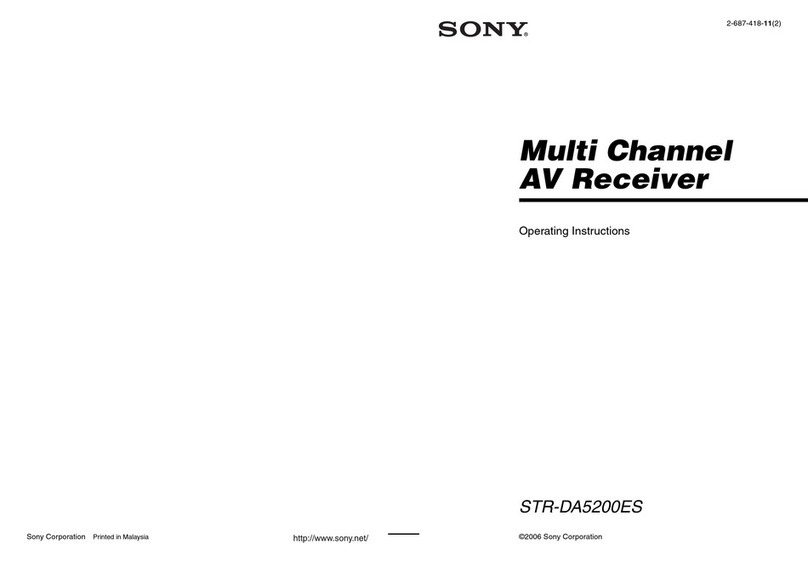
Sony
Sony STR-DA5200ES - Fm Stereo/fm-am Receiver operating instructions
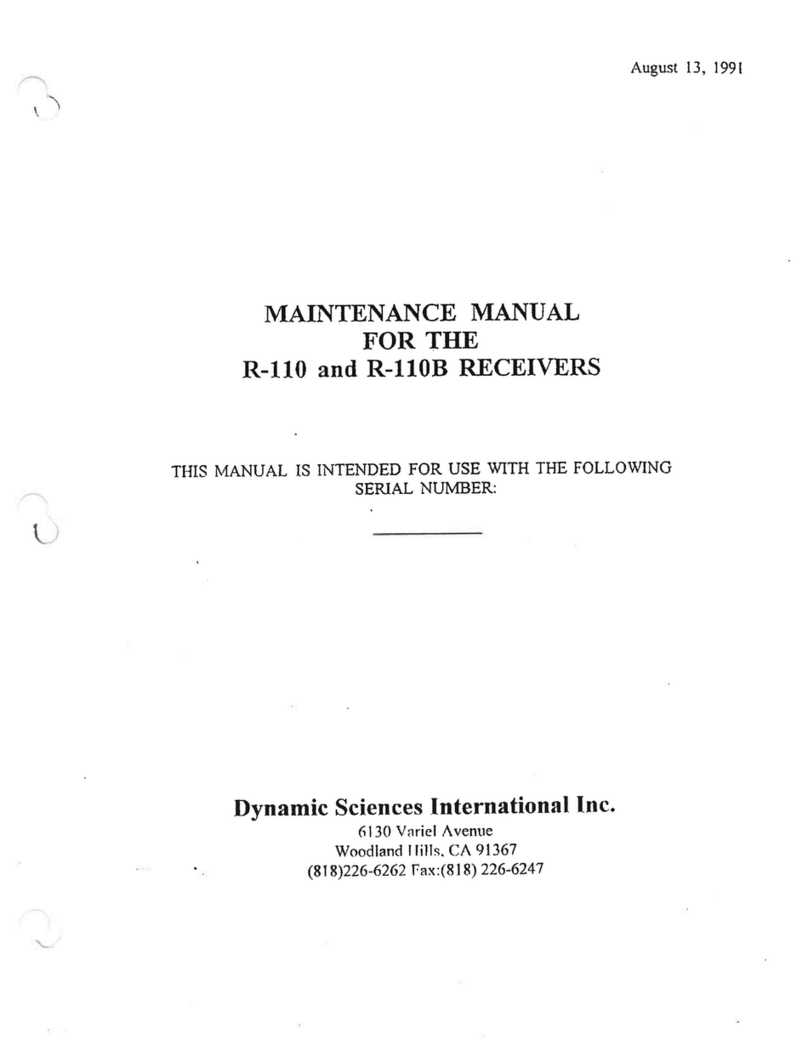
DSI
DSI R-110 Maintenance manual

Hallicrafters
Hallicrafters SX-43 Installation and operation instruction manual
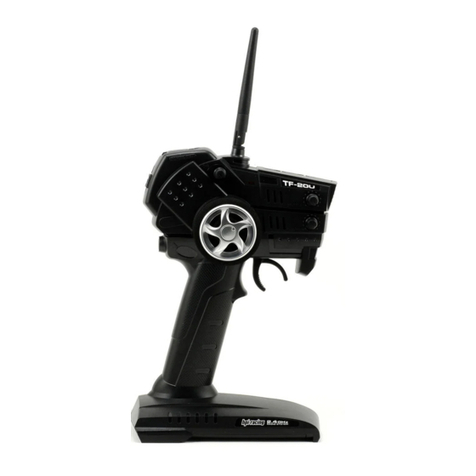
HPI Racing
HPI Racing TF-20 instruction manual
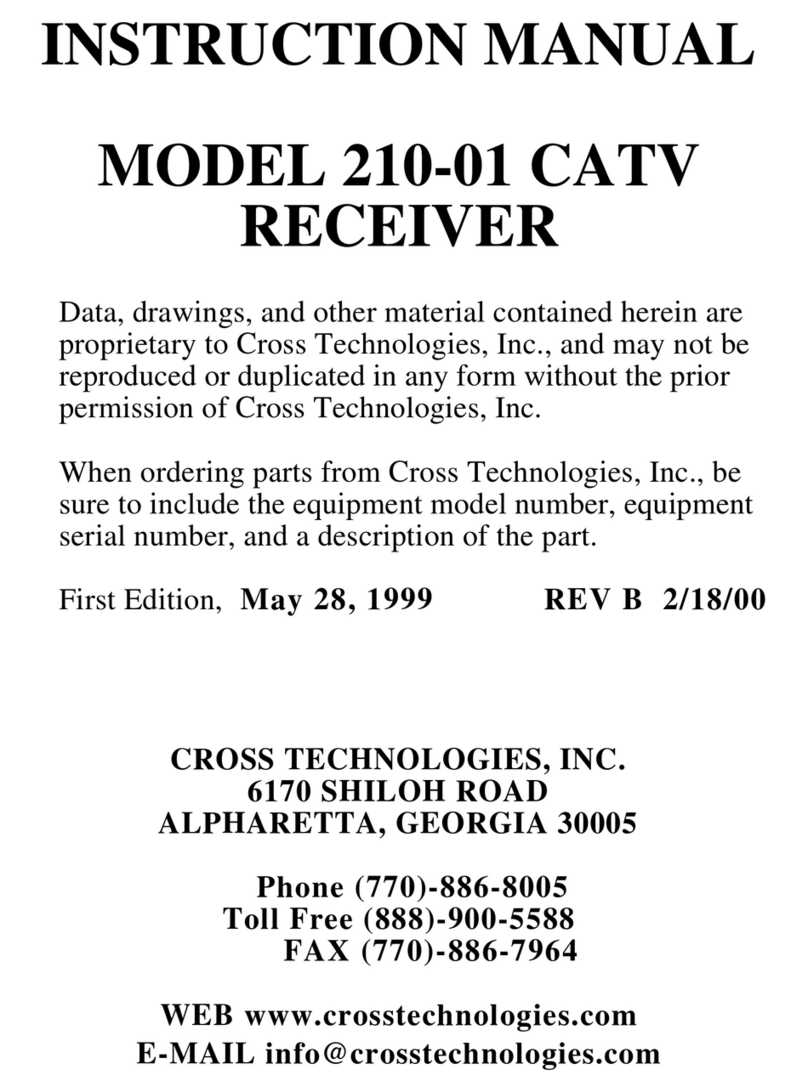
Cross Technologies
Cross Technologies 210-01 CATV instruction manual
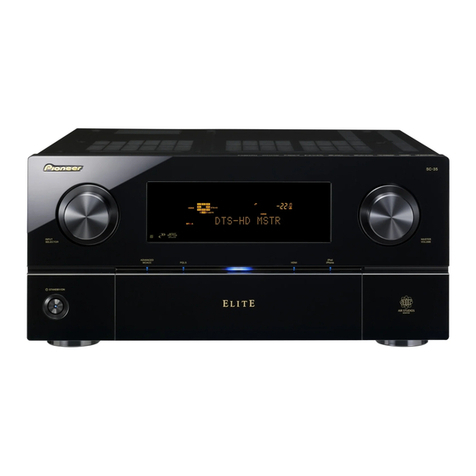
Pioneer
Pioneer Elite SC-37 operating instructions

